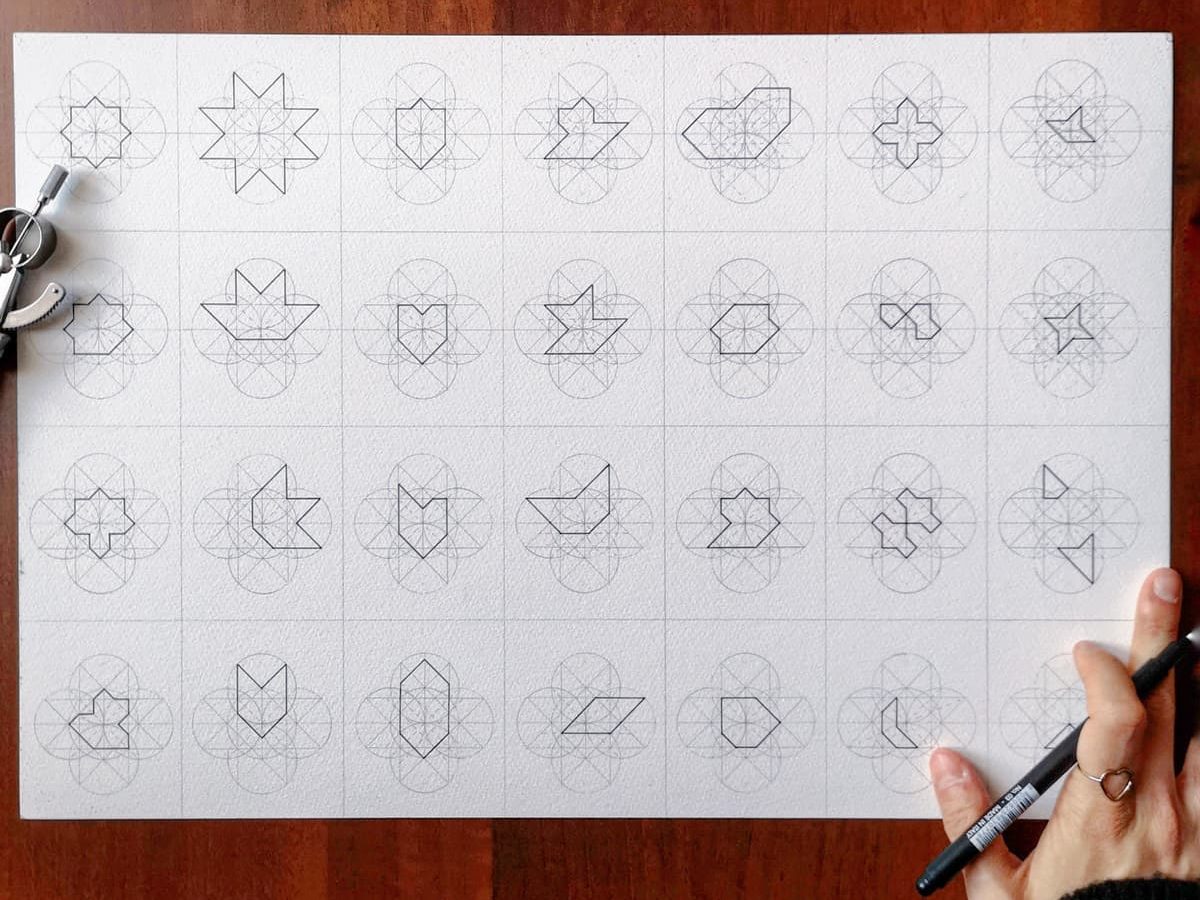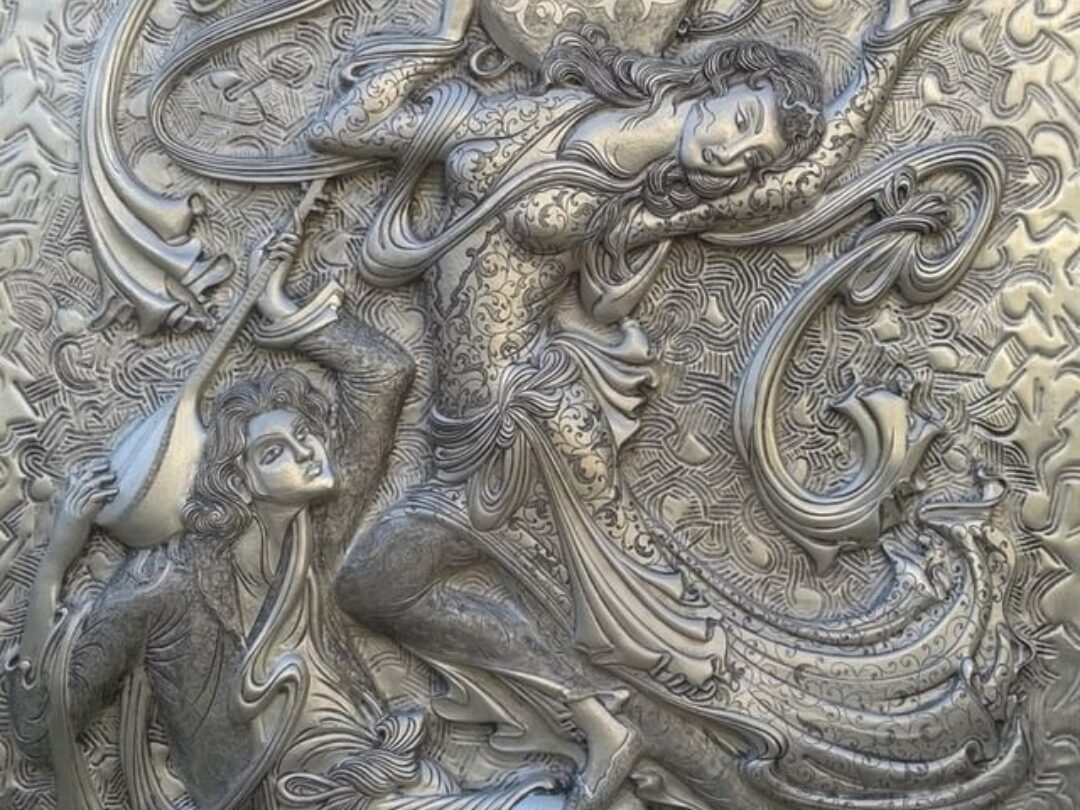
Drum roll, please. “My top 3 rules for Islamic geometric pattern analysis” aka the best post on my blog is here.
Am I exaggerating? Maybe. But this is by far THE most frequently asked question I get:
HOW TO ANALYSE A PATTERN?
Geometric pattern analysis is a critical aspect of understanding the underlying principles of geometric designs and is essential for artists, designers, and engineers alike. In this blog post, we will discuss my three rules for geometric pattern analysis.
I say “my” because these are the rules I use, but other artists can use a different approach based on the method of construction used.
Psst…Read till the end to find an amazing gift I created for you 😉
Rule #1: Do the prep work
To analyse a geometric pattern can be very tricky, and you want to do all the preparation work to make it as easy as possible.
Preparation work could be:
- Study the basics: you can’t analyse a pattern if you don’t know basic geometry rules. Having basic knowledge is essential to understanding the next point. Don’t know where to start? Check the following links:
Check my free tutorials and Zellige shapes study here!
Check my free guide to get started with Islamic geometry here!
- Use the black-and-white method: consider that colour rendering of an Islamic geometric design can be very distracting. My advice is to do your analysis on a black-and-white rendering of the pattern.
- Gather the tools: for pattern analysis, you need the same tools you use for pattern construction. Geometry compass, tracing paper, ruler and pencil etc…
Here’s the full list of the tools I use!
Once you’ve done the preparation work, follow rule #2
Rule #2: Identify the Pattern
The second rule of Islamic geometric pattern analysis is to identify the pattern and acquire the most amount of information possible. Ask yourself questions like:
- Is this a 4fold, 6fold or 5fold pattern?
- Is this a compound pattern or a simple pattern?
- How many single patterns can I spot?
- Are there stars in this pattern (8fold stars for instance)?
- Is there any repetition or symmetry?
Once you understand and answer these questions, you can see how the shapes are arranged and repeated to create the overall design.
For example, in the Polygon Method, the pattern is made up of a combination of regular polygons and stars that are arranged in a repeating pattern. By identifying the basic elements of the pattern, it becomes easier to understand the underlying principles of the design and how it was created.
Geometric patterns also often exhibit a high degree of symmetry and repetition, which can be used to create visual harmony and balance. Once you identify the repeating units of the pattern and how they are mirrored or rotated, you can gain a deeper understanding of the design and the principles that underlie it.
Rule #3: Draw the grid
Most of you know that every geometric design comes from good construction.
A web of lines and circles creates the basic structure of any Islamic geometric pattern, and to find how to construct a certain pattern we first need to understand the underlying grid.
Start by drawing the perimeter of each repeating pattern and connecting the centres of the stars or repeating shapes. Draw the division of each rosette and check how it’s connected to the rest of the design.
After this point, only the construction of the pattern itself is left which comes easy if you have the basic knowledge and have applied these 3 simple rules.
I hope this blog post has been useful. There is so much going on behind a pattern, and it’s impossible to summarize it in a blog post. And I hope this has cleared some of your doubts.
Also, don’t forget to grab my freebie about pattern analysis here.
To learn more about pattern analysis and how to get INDEPENDENT in your drawing check my course “Islamic Geometric Patterns: Analyse and Construct a Zellige Pattern”.
My top 3 rules for Islamic geometric pattern analysis
March 20, 2023



Love this so much! Thank you for your kindness and for sharing
Love this! Thank you for your kindness and sharing your knowledge!
[…] you are searching for patterns to copy and paint, inspiration, or you just want to try my “My top 3 rules for Islamic geometric pattern analysis” the following ways will help you find new Islamic geometric pattern ideas for your […]